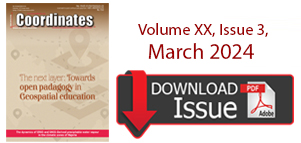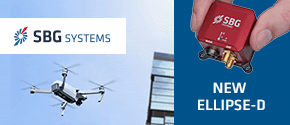| GNSS News | |
GNSS
Experimenting satellite-based positioning on the lunar surface
The project NEIL (Navigation Early Investigation on Lunar surface) will experiment satellite-based positioning on the lunar surface. The project is at the center of an agreement between the Italian Space Agency (ASI) and NASA, linked to the CLPS 19-D mission (NASA’s Commercial Lunar Payload Service, Task Order 19) in which the US Space Agency is planning to land to the “Mare Crisium” basin of the Moon in 2023. The NEIL payload, subject matter of the contract signed between ASI and Qascom Srl, will be integrated into the experimentation called Lunar GNSS Receiver Experiment (LuGRE), an ASI/NASA cooperation framework with the objective to develop activities in lunar and cislunar environments.
For the first time in history, the positioning based on GPS and Galileo signals will be tested at almost 400.000 km distance from Earth. This is the first experiment of its kind considering that the previous limit was experimented by NASA at a distance of approximately 200.000 km. The mission, in addition to the NEIL payload, will also bring to the Moon other 9 scientific experiments. Planned in 2023, it is foreseen to be launched with Falcon 9 of Space X.
Under this contract, Qascom will develop and provide to ASI a dual-frequency and double constellation GNSS receiver, as well as the entire radiofrequency chain (antenna, LNA, filters), capable to support the extreme environmental conditions of the Moon. NEIL will be integrated on the NASA’s Blue Ghost lunar lander in 2022. The GPS and Galileo signals received from NEIL will be extremely weak due to the distance from Earth, and therefore will be processed with specific algorithms allowing to calculate position and time, even if with reduced accuracy, both during the Moon transfer orbit and on its surface.
NEIL provides also an important technical and scientific contribution to study how GPS and Galileo could be used for positioning and timing in future Moon missions, including for example the deployment of lunar satellite constellations, lunar rovers, the lunar space station Gateway and the infrastructures that are going to be developed in the frame of Artemis programs. The raw measurement collected will be used by the research community to study the lunar and cislunar environment and evaluate the future use of GNSS to support permanent missions.www.asi.it
Dr Mark Psiaki receives Kepler award
The Institute of Navigation’s (ION) Satellite Division presented Dr. Mark Psiaki with its Johannes Kepler Award September 24, 2021 during the ION GNSS+ Conference.
Dr. Psiaki was recognized for setting a standard of rigor, clarity, and thoroughness in addressing key estimation and signal processing problems in PNT. He originated the technique of bit-wise parallel RF signal processing for use in general-purpose processors. This enabler of software-defined GNSS led to the first space deployment of a fully software-defined GNSS receiver on a general-purpose DSP and to the widespread adoption of software-defined GNSS across the aerospace industry.
Additionally, Dr. Psiaki’s real-time software radio expertise enabled the development of a spoofer cultivated in his research group. He subsequently led the development of spoofing detection algorithms based on cross-correlation of unknown P(Y) codes and based on direction-of-arrival sensing. He was the lead signal processing designer/ analyst for the iGPS program that combined Iridium L-band downlink signals, GPS signals, and INS data to enhance GPS anti-jam capabilities.
Dr Lakshay Narula receives Parkinson award
The Institute of Navigation’s (ION) Satellite Division presented Dr. Lakshay Narula with its prestigious Bradford W. Parkinson Award September 24, 2021 during the ION GNSS+ 2021 conference. Dr. Narula was recognized for his thesis, “Towards Secure & Robust PNT for Automated Systems”.
The Bradford W. Parkinson Award is awarded annually to an outstanding graduate student in the field of Global Navigation Satellite Systems (GNSS). This award, which honors Dr. Parkinson for his leadership in establishing both the U.S. Global Positioning System and the Satellite Division of the ION, includes a personalized plaque and a $2,500 honorarium.
Galileo Ground Control Segment ready
In early July the European Union Agency for the Space Programme (EUSPA) announced the upcoming upgrades of the Galileo GCS infrastructure in preparation for the next launch. Recently, the new GCS V3.0 infrastructure has been completely deployed in the Galileo Ground Control Centres in Oberpfaffenhofen (Germany) and Fucino (Italy) and is being used to operate the Galileo Satellite Constellation since early August. The new GCS release includes upgradings to increase system capabilities, enhance virtualization and obsolescence resolution as well as operational improvements. It represents a major step forward towards the Galileo FOC (Full Operational Capability), boosting the management capacity to 38 satellites. www.gmv.com
GLONASS monitoring stations in five countries
The Precision Instrument-Making Systems research and production corporation (part of the state space corporation Roscosmos) plans to place non-request measuring stations of the SM-Glonass satellite navigation system in Brazil, China, Indonesia, India and Angola. The equipment from Precision Instrument-Making Systems is meant for enhancing the accuracy and improving other parameters of the system GLONASS. https://tass.com











 (No Ratings Yet)
(No Ratings Yet)




Leave your response!